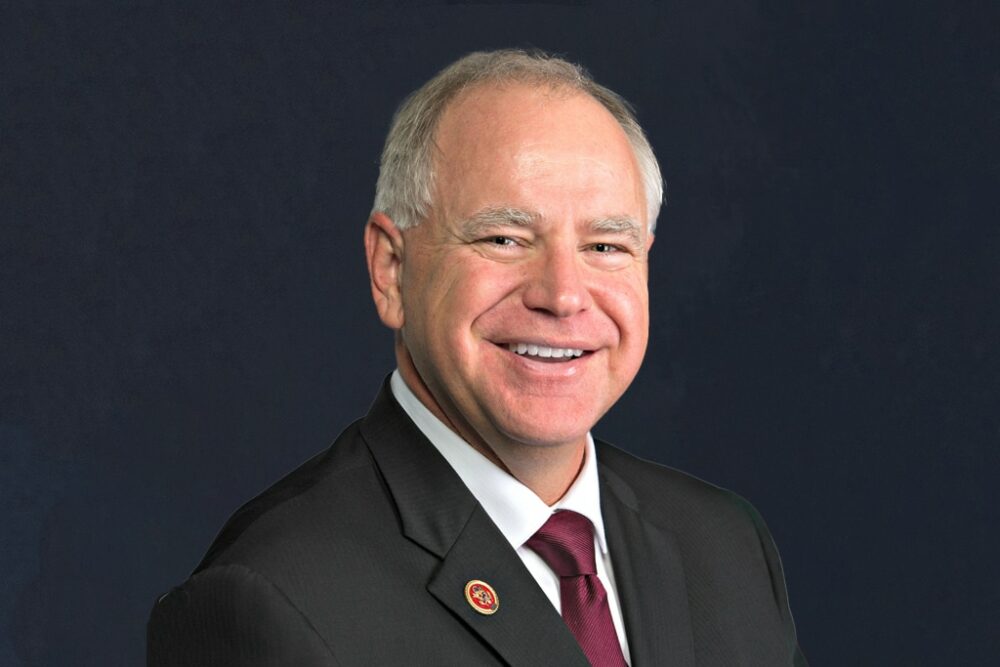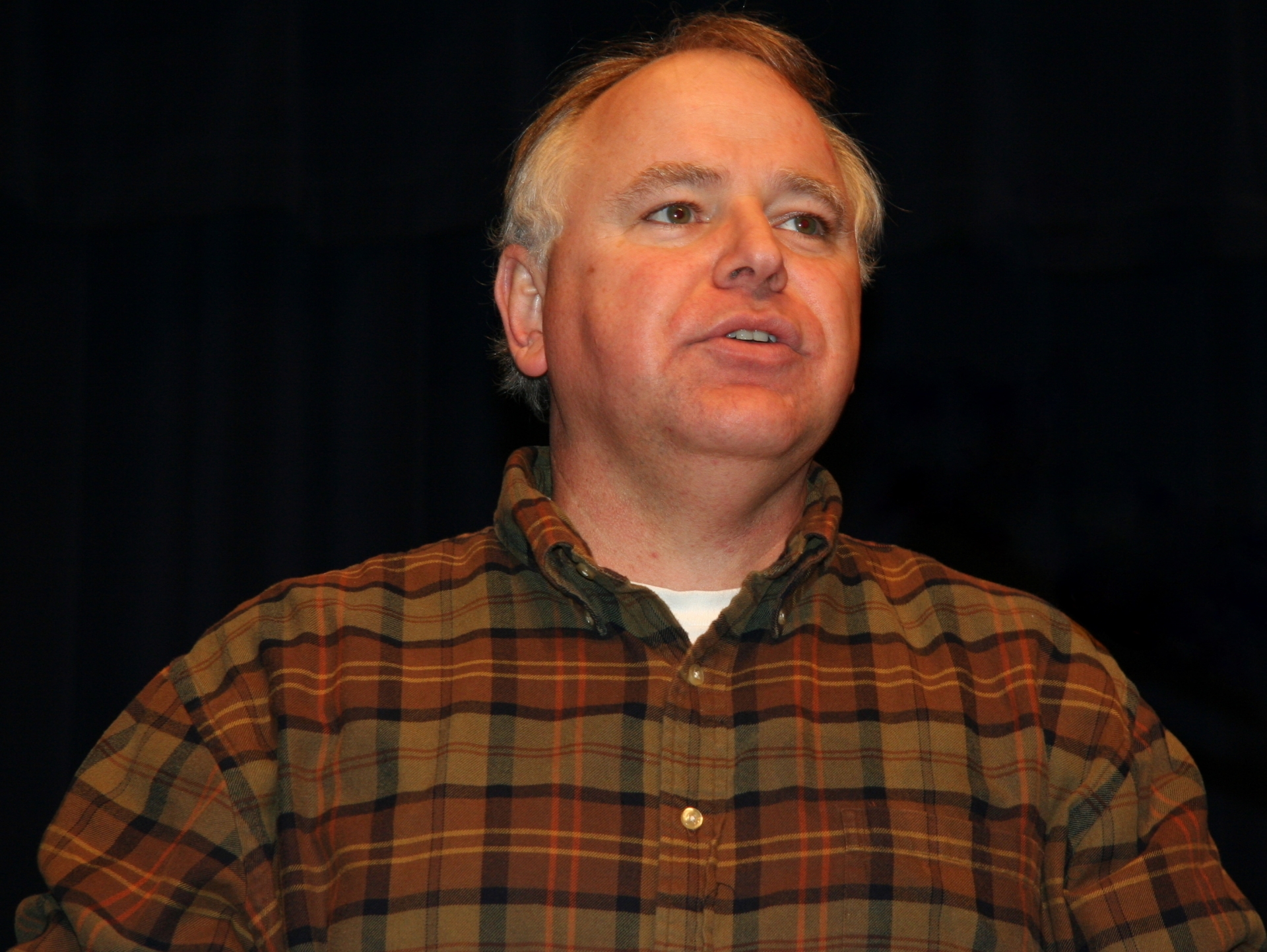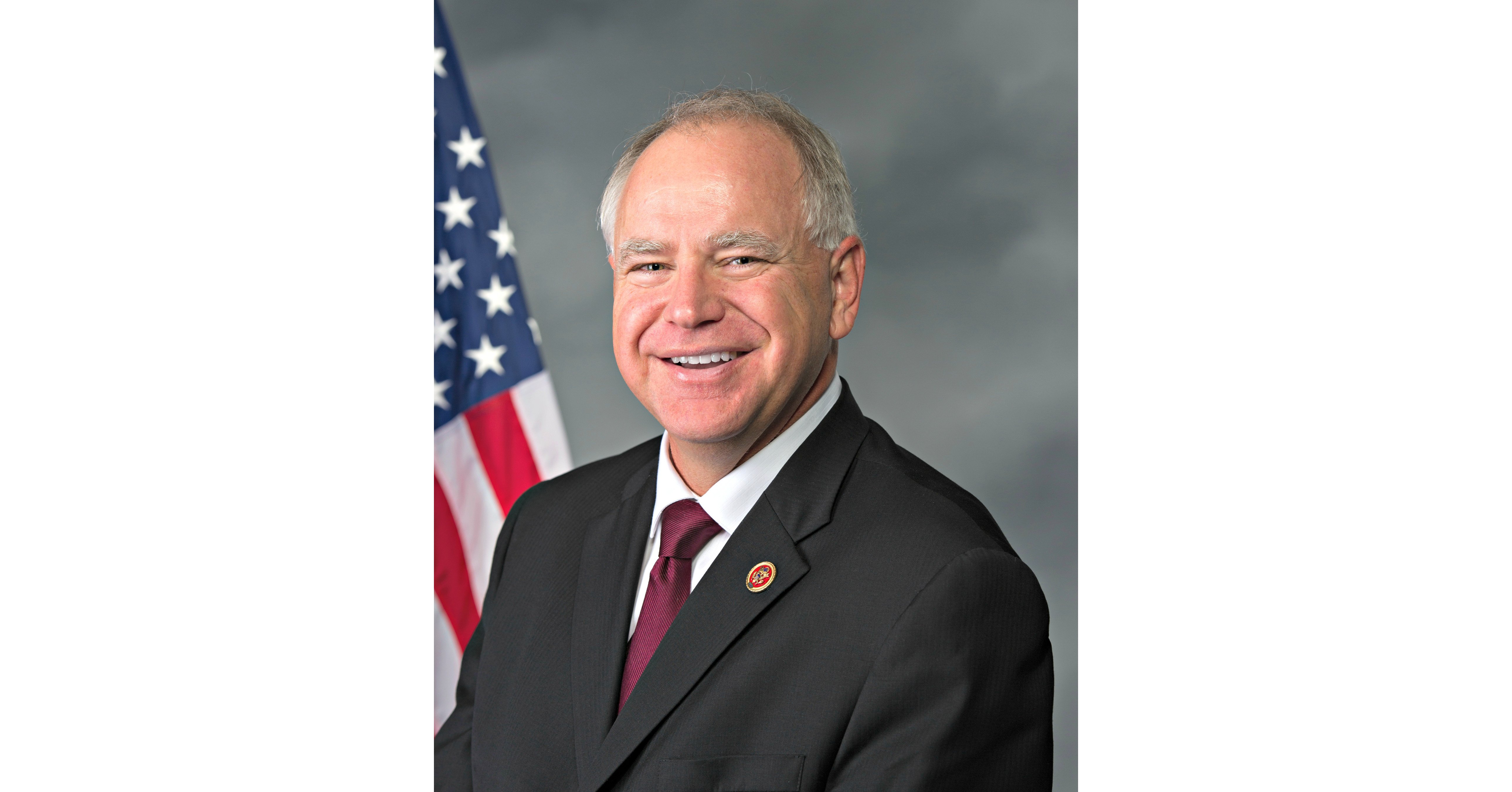Tim Walz: Governor of Minnesota

Tim Walz, the 41st Governor of Minnesota, has a long and distinguished career in public service, transitioning from a decorated military veteran to a dedicated public servant. His journey reflects a commitment to representing the people of Minnesota and championing their interests.
Political Career and Key Milestones
Tim Walz’s political career began with his election to the United States House of Representatives in 2006, representing Minnesota’s 1st congressional district. During his tenure in the House, he gained recognition for his work on issues such as education, veterans’ affairs, and agriculture. He also played a key role in the passage of significant legislation, including the Affordable Care Act.
In 2018, Walz ran for Governor of Minnesota, emphasizing his commitment to education, healthcare, and economic development. He defeated incumbent Governor Mark Dayton, marking a significant shift in Minnesota politics. His victory was attributed to his strong grassroots campaign and his ability to connect with voters on a personal level.
Current Policies and Initiatives
As Governor, Tim Walz has implemented a range of policies and initiatives focused on improving the lives of Minnesotans. These include:
Education
- Investing in Early Childhood Education: Walz has made significant investments in early childhood education, recognizing its crucial role in preparing children for success in school and life. This includes expanding access to high-quality preschool programs and providing financial support to families.
- Supporting Public Schools: Walz has prioritized funding for public schools, aiming to ensure that all students have access to a quality education. He has also advocated for policies that address disparities in educational outcomes, such as increasing funding for schools in low-income communities.
- Promoting Higher Education Affordability: Walz has taken steps to make higher education more affordable, including increasing funding for state colleges and universities and expanding access to financial aid programs.
Healthcare
- Expanding Access to Healthcare: Walz has worked to expand access to affordable healthcare for all Minnesotans. This includes supporting the Affordable Care Act and advocating for policies that reduce the cost of healthcare.
- Addressing the Opioid Crisis: Walz has made combating the opioid crisis a top priority, implementing policies to increase access to treatment and prevention programs. He has also worked to reduce the stigma associated with addiction and promote recovery.
- Improving Mental Health Services: Walz has focused on improving access to mental health services, recognizing the importance of addressing mental health issues early on. This includes increasing funding for mental health programs and promoting mental health awareness.
Economic Development
- Creating Jobs: Walz has made creating jobs a central focus of his administration. He has worked to attract new businesses to Minnesota and support the growth of existing businesses. This includes providing tax incentives and investing in infrastructure projects.
- Supporting Small Businesses: Walz has prioritized supporting small businesses, recognizing their vital role in the Minnesota economy. This includes providing loans and grants to small businesses and advocating for policies that reduce regulations.
- Investing in Infrastructure: Walz has made significant investments in infrastructure, recognizing its importance for economic growth. This includes funding projects to improve roads, bridges, and public transportation.
Political Philosophy and Key Priorities
Tim Walz’s political philosophy is rooted in a belief in the importance of government playing a role in improving the lives of its citizens. He believes that government should be a force for good, working to create a more just and equitable society.
Walz’s key priorities for governing Minnesota include:
- Education: Walz believes that education is the foundation of a strong economy and a just society. He has made investing in education a top priority, aiming to ensure that all Minnesotans have access to a quality education.
- Healthcare: Walz believes that healthcare is a fundamental human right. He has worked to expand access to affordable healthcare for all Minnesotans and address the opioid crisis.
- Economic Development: Walz believes that a strong economy is essential for the well-being of all Minnesotans. He has focused on creating jobs, supporting small businesses, and investing in infrastructure.
- Environmental Protection: Walz believes that protecting the environment is essential for the health and well-being of future generations. He has worked to address climate change and promote sustainable practices.
- Social Justice: Walz believes that all Minnesotans should have the opportunity to succeed, regardless of their race, ethnicity, gender, sexual orientation, or socioeconomic status. He has worked to address issues of racial justice, gender equality, and LGBTQ+ rights.
Impact of Leadership on Minnesota
Tim Walz’s leadership has had a significant impact on Minnesota, both in terms of its economy and its social fabric.
Economic Impact
- Job Growth: Under Walz’s leadership, Minnesota has seen steady job growth, with unemployment rates remaining low. This growth has been driven by a combination of factors, including investments in infrastructure, support for small businesses, and a favorable business climate.
- Economic Diversification: Walz has worked to diversify the Minnesota economy, reducing its reliance on any one industry. This has included investing in sectors such as technology, healthcare, and renewable energy.
- Fiscal Responsibility: Walz has maintained a balanced budget, ensuring that the state’s finances are sound. This has allowed Minnesota to make investments in key priorities while maintaining a strong credit rating.
Social Impact
- Education Reform: Walz has made significant progress in reforming Minnesota’s education system, investing in early childhood education, supporting public schools, and promoting higher education affordability. These reforms have helped to improve educational outcomes for all Minnesotans.
- Healthcare Access: Walz has expanded access to affordable healthcare for Minnesotans, reducing the number of uninsured and improving the quality of care. This has had a positive impact on the health and well-being of all Minnesotans.
- Social Justice: Walz has made progress on issues of social justice, addressing racial disparities, promoting gender equality, and protecting LGBTQ+ rights. This has helped to create a more just and equitable society for all Minnesotans.
Minnesota Politics and Governance

Minnesota’s political landscape is characterized by a long-standing tradition of competitive two-party politics, with the Democratic-Farmer-Labor Party (DFL) and the Republican Party vying for control of the state government. These parties have distinct platforms and philosophies, influencing the direction of state policy.
The Minnesota Legislature and its Relationship with the Governor
The Minnesota Legislature, consisting of the Senate and the House of Representatives, plays a pivotal role in shaping state policy. It is responsible for crafting and approving legislation, overseeing state agencies, and approving the state budget. The Governor, elected independently, holds significant power in the legislative process, with the authority to veto bills passed by the Legislature.
The relationship between the Governor and the Legislature is often characterized by negotiation and compromise. When the Governor and the Legislature are controlled by different parties, a dynamic of checks and balances emerges, with both branches seeking to influence policy outcomes. This dynamic can lead to gridlock, particularly when there are significant ideological differences. Conversely, when the Governor and the Legislature are controlled by the same party, a more unified approach to policymaking is possible. However, even in these scenarios, disagreements can arise within the governing party, resulting in internal debates and potential compromises.
The Impact of Recent Political Events and Trends
Recent political events and trends have significantly impacted Minnesota’s political climate. The rise of partisan polarization, fueled by national political trends and social media, has contributed to a more polarized political landscape in the state. This polarization has manifested in heightened political activism, increased voter turnout, and a growing sense of division among the electorate.
Additionally, the changing demographics of Minnesota have influenced political dynamics. The state’s growing diversity has led to a more complex political landscape, with diverse communities advocating for their interests and influencing policy debates. This evolving demographic landscape has prompted discussions about representation, inclusion, and the need for policies that reflect the state’s changing demographics.
Comparing and Contrasting the Governance Styles of Tim Walz and Previous Governors
Tim Walz, the current Governor of Minnesota, has adopted a collaborative and pragmatic approach to governance. He emphasizes the importance of consensus-building and working across party lines to achieve common goals. This approach has been evident in his efforts to address issues such as education reform, healthcare access, and economic development.
Previous Minnesota Governors have adopted different governance styles. Some, like Jesse Ventura, adopted a more independent and unconventional approach, challenging established political norms. Others, like Arne Carlson, emphasized bipartisanship and collaboration. The governance style of each Governor has reflected their individual personality, political philosophy, and the political context of their time in office.
Minnesota’s Socioeconomic Landscape: Tim Walz Minnesota

Minnesota, often called the “North Star State,” is renowned for its natural beauty, vibrant culture, and strong economy. However, like any other state, it faces unique socioeconomic challenges that shape the lives of its residents. This section delves into the intricacies of Minnesota’s socioeconomic landscape, examining its demographic composition, economic performance, and prominent social issues.
Demographic Snapshot
Minnesota’s population, currently estimated at over 5.7 million, is diverse and dynamic. The state’s demographics are shaped by factors like immigration, migration patterns, and changing family structures. To understand the state’s socioeconomic landscape, it’s crucial to examine its key demographic indicators:
| Category | Data |
|---|---|
| Population (2023 estimate) | 5,726,024 |
| Median Household Income (2021) | $82,769 |
| Percentage of Population with Bachelor’s Degree or Higher (2021) | 35.6% |
| Racial and Ethnic Composition (2021) | White: 79.5%, Hispanic or Latino: 6.5%, Black or African American: 6.1%, Asian: 5.6%, American Indian and Alaska Native: 1.3%, Two or More Races: 2.2% |
Economic Performance
Minnesota’s economy is characterized by its diversity and strength, ranking among the top in the nation. The state boasts a thriving manufacturing sector, a robust agricultural industry, and a burgeoning technology and innovation landscape. Key industries driving Minnesota’s economic growth include:
- Manufacturing: Minnesota has a long-standing tradition of manufacturing excellence, with prominent industries such as medical devices, food processing, and machinery. The state is home to renowned companies like Medtronic, General Mills, and 3M.
- Agriculture: Minnesota is a leading agricultural producer, known for its vast farmlands and production of crops like corn, soybeans, and dairy products. The state’s agricultural sector contributes significantly to its economy and employs a considerable portion of its workforce.
- Technology and Innovation: In recent years, Minnesota has emerged as a hub for technology and innovation. The state is home to major technology companies like Target, Best Buy, and Cargill, as well as a growing number of startups and research institutions. This sector is a key driver of economic growth and job creation.
- Healthcare: Minnesota has a strong healthcare sector, with renowned hospitals, clinics, and research institutions. The state is a leader in medical innovation and attracts top medical professionals. The healthcare sector is a significant contributor to the state’s economy and provides essential services to its residents.
Social Issues, Tim walz minnesota
Minnesota faces several social issues that impact the well-being of its citizens. These issues are complex and often intertwined, requiring comprehensive and collaborative solutions.
- Education: While Minnesota boasts a high level of educational attainment, disparities exist in access to quality education. Addressing these disparities and ensuring equal opportunities for all students is a crucial social issue.
- Healthcare: Access to affordable and quality healthcare is a significant concern in Minnesota. The state faces challenges related to rising healthcare costs, insurance coverage, and access to care in rural areas.
- Public Safety: Minnesota, like many other states, faces challenges related to public safety. Issues such as crime rates, gun violence, and police accountability require careful attention and effective solutions.
Tim walz minnesota – Governor Tim Walz of Minnesota is known for his calm demeanor and steady leadership, but even he couldn’t have predicted the chaos that erupted when a helicopter crashed into a Hilton Hotel in the heart of the state. The incident, thankfully without any major injuries, served as a stark reminder of the unpredictable nature of life, even for a governor who prides himself on preparedness.
Tim Walz, the governor of Minnesota, has been a strong advocate for social programs, including Social Security. As the cost of living continues to rise, it’s crucial that seniors have the financial support they need, and the 2025 social security cola increase will be a vital step in that direction.
Walz has repeatedly emphasized the importance of protecting Social Security, a sentiment shared by many Minnesotans who rely on it for their well-being.
